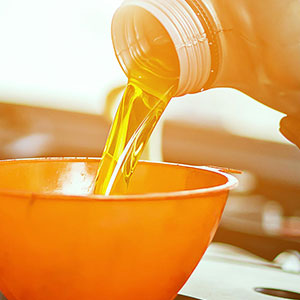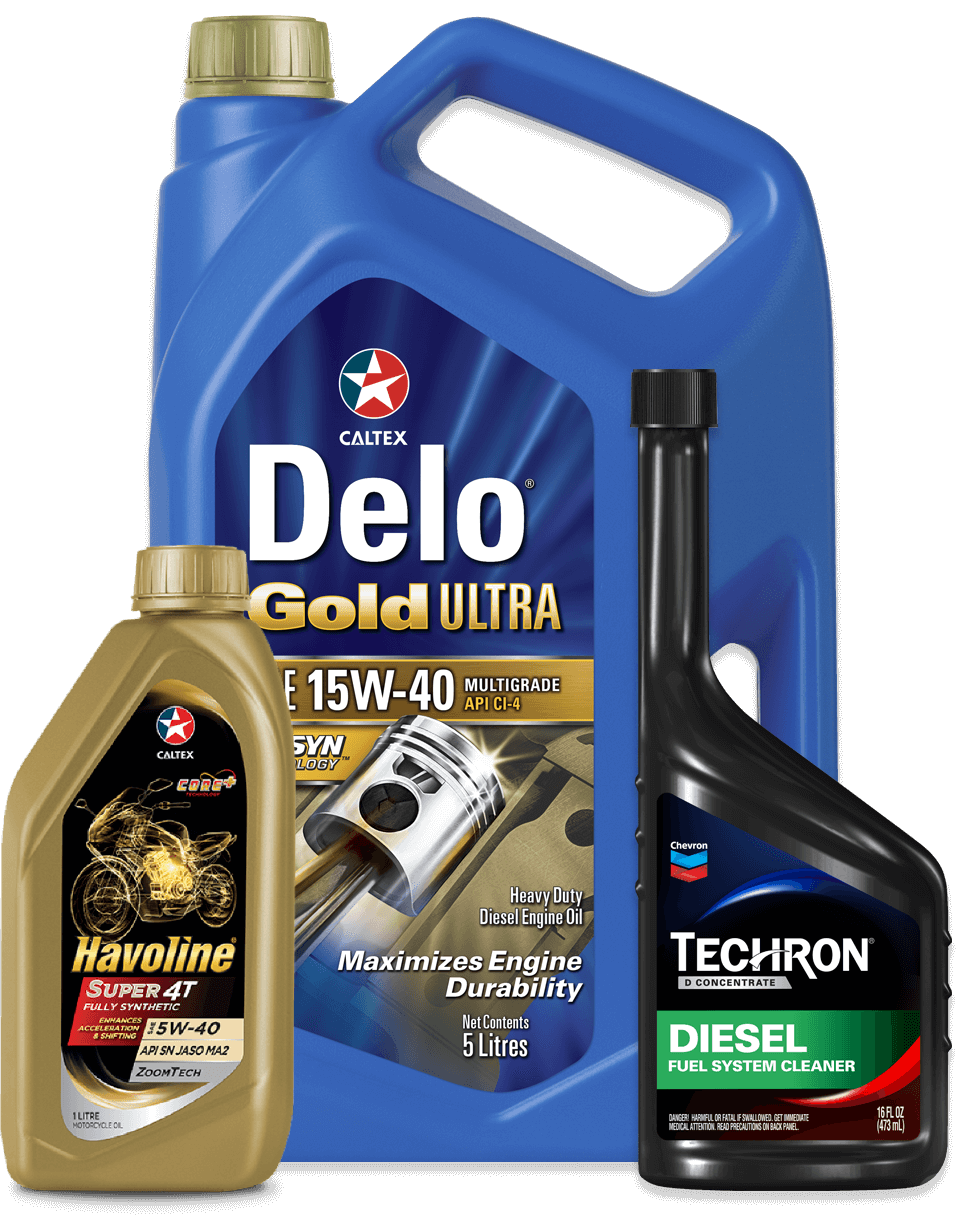Lubricant compatibility questions are undoubtedly some of the most common in the field of lubrication technical support, but remain some of the most difficult to answer. That is because virtually every scenario is unique and there is a myriad of factors that can affect the compatibility of one lubricant with another, such as base oil and additive chemistry, as well as age and condition of in-service product.
The first step in deciding how to approach compatibility is to understand what compatibility is or – better yet – what it is not. Two lubricants of the same viscosity, or two that are considered comparable, for example, might not necessarily be compatible. Even if a product is deemed a “suitable replacement” for another, the two should not be mixed without consideration for potential adverse reactions.
Lubricating Oils
When mixing incompatible lubricating oils, one can observe anything from a hazy appearance to formation of deposits, foaming and possible deterioration of lubrication performance. The Standard Practice for Evaluating Compatibility of Mixtures of Turbine Lubricating Oils, ASTM D7155, is the most common test method for evaluating compatibility and there are two tiers of testing that can be completed. The first tier evaluates the mixture for visual changes, such as haze or formation of a precipitate. The second tier compares some performance parameters of the mixture with its constituent products. Most often, testing is limited to tier 1, but tier 2 tests can be selected based on the type of product and the application.
So much for technical explanations, but what about a real-world example of how mixing two incompatible lubricants can have negative consequences? In this example, we will use a turbine application calling for an ISO 32 turbine oil. Typically, these oils will have high oxidation stability, rust and corrosion protection and the most important property - rapid water separation. ASTM D1401 can help determine if an oil can separate the water into a free layer or stay together as an emulsion. Depending on the application, free or emulsified water can cause lubricant and component failure, therefore knowing this property can be critical.
Now, let’s say that a technician is about to top off a turbine oil and reaches for a small transport container to deliver fresh oil to the reservoir. The container looks clean, but what is not apparent is that it was used earlier that same day to top off a generator with engine oil. Engine oils contain detergent additives which cause water and oil to emulsify – or to prevent them from separating. The slightest amount of engine oil residue, now mixed with clean turbine oil, can be enough to have an emulsifying effect on the entire reservoir of turbine oil. This again could shorten oil life and lead to corrosion or damage to components.
Greases
Mixing of greases whose soap thickeners are known to be incompatible can result in softening, hardening, or separation of base oil from the thickener, resulting in the mixture leaking out of the bearing. It could also result in the bearing working harder to move the grease around which would overheat the bearing. It is generally recommended to completely clean or purge greases from equipment before applying a different grease. Once the change has been made and equipment operation has resumed, it is a good idea to monitor for signs of incompatibility until the next lubrication interval. The Standard Practice for Evaluating Compatibility of Binary Mixtures of Lubricating Greases, ASTM D6185, is used to evaluate grease mixtures at different ratios for three specific performance parameters; dropping point, consistency and mechanical stability.
Why Mix?
But why would you want to mix two lubricants in the first place? Most compatibility questions are related to adding fresh oil to in-service oil. Perhaps you have an application that is in need of topping off, but the required product is out-of-stock. Or maybe you are in the process of changing oil suppliers and simply want to know whether a rolling change is possible, versus complete change out of fluids.
In any case, if a complete drain, flush and refill procedure is not a desirable option, it is always best to consult with your lubricant supplier before proceeding. Most suppliers should maintain information about the visual compatibility of their products with one another, and often they would have performed testing between those products and comparable competitor products. Generally, two broad categories of test results are maintained:
- Both product samples are in fresh, unused condition
- One fresh, unused sample is mixed with a sample that is in-service and in used condition
Keep in mind that while such data points can be used as a basis for decision-making, they should not be considered definitive for all scenarios, and when in doubt, appropriate testing through a reputable oil analysis laboratory is recommended.
Lubricant compatibility questions are undoubtedly some of the most common in the field of lubrication technical support, but remain some of the most difficult to answer. That is because virtually every scenario is unique and there is a myriad of factors that can affect the compatibility of one lubricant with another, such as base oil and additive chemistry, as well as age and condition of in-service product.
The first step in deciding how to approach compatibility is to understand what compatibility is or – better yet – what it is not. Two lubricants of the same viscosity, or two that are considered comparable, for example, might not necessarily be compatible. Even if a product is deemed a “suitable replacement” for another, the two should not be mixed without consideration for potential adverse reactions.
Lubricating Oils
When mixing incompatible lubricating oils, one can observe anything from a hazy appearance to formation of deposits, foaming and possible deterioration of lubrication performance. The Standard Practice for Evaluating Compatibility of Mixtures of Turbine Lubricating Oils, ASTM D7155, is the most common test method for evaluating compatibility and there are two tiers of testing that can be completed. The first tier evaluates the mixture for visual changes, such as haze or formation of a precipitate. The second tier compares some performance parameters of the mixture with its constituent products. Most often, testing is limited to tier 1, but tier 2 tests can be selected based on the type of product and the application.
So much for technical explanations, but what about a real-world example of how mixing two incompatible lubricants can have negative consequences? In this example, we will use a turbine application calling for an ISO 32 turbine oil. Typically, these oils will have high oxidation stability, rust and corrosion protection and the most important property - rapid water separation. ASTM D1401 can help determine if an oil can separate the water into a free layer or stay together as an emulsion. Depending on the application, free or emulsified water can cause lubricant and component failure, therefore knowing this property can be critical.
Now, let’s say that a technician is about to top off a turbine oil and reaches for a small transport container to deliver fresh oil to the reservoir. The container looks clean, but what is not apparent is that it was used earlier that same day to top off a generator with engine oil. Engine oils contain detergent additives which cause water and oil to emulsify – or to prevent them from separating. The slightest amount of engine oil residue, now mixed with clean turbine oil, can be enough to have an emulsifying effect on the entire reservoir of turbine oil. This again could shorten oil life and lead to corrosion or damage to components.
Greases
Mixing of greases whose soap thickeners are known to be incompatible can result in softening, hardening, or separation of base oil from the thickener, resulting in the mixture leaking out of the bearing. It could also result in the bearing working harder to move the grease around which would overheat the bearing. It is generally recommended to completely clean or purge greases from equipment before applying a different grease. Once the change has been made and equipment operation has resumed, it is a good idea to monitor for signs of incompatibility until the next lubrication interval. The Standard Practice for Evaluating Compatibility of Binary Mixtures of Lubricating Greases, ASTM D6185, is used to evaluate grease mixtures at different ratios for three specific performance parameters; dropping point, consistency and mechanical stability.
Why Mix?
But why would you want to mix two lubricants in the first place? Most compatibility questions are related to adding fresh oil to in-service oil. Perhaps you have an application that is in need of topping off, but the required product is out-of-stock. Or maybe you are in the process of changing oil suppliers and simply want to know whether a rolling change is possible, versus complete change out of fluids.
In any case, if a complete drain, flush and refill procedure is not a desirable option, it is always best to consult with your lubricant supplier before proceeding. Most suppliers should maintain information about the visual compatibility of their products with one another, and often they would have performed testing between those products and comparable competitor products. Generally, two broad categories of test results are maintained:
- Both product samples are in fresh, unused condition
- One fresh, unused sample is mixed with a sample that is in-service and in used condition
Keep in mind that while such data points can be used as a basis for decision-making, they should not be considered definitive for all scenarios, and when in doubt, appropriate testing through a reputable oil analysis laboratory is recommended.

About Author
Since joining the company in 2000, David Hasch has held various roles at Chevron including direct sales representative, supply chain production planner, and lubrication engineer in Chevron Lubetek where he provided technical support for lubricants across the globe. In his current position, Marketing specialist, he creates technical content to help showcase the company's products and solutions across all commercial and industrial market segments in North America. David graduated from the University of Louisville with a Bachelor of Science in Urban Geography and GIS Technology. He earned his CLS in 2014 and is fluent in Spanish and Portuguese.
ARTICLES FOR YOU
ARTICLES FOR YOU

Trends in Passenger Car Motor Oils: Evolving Engine Technology Driving Change

GM’s dexos1™ PCMO Specification Knowledge

How Synthetic Oils Are Helping Cars Last Longer

Synthetic Oils Are The Wave Of The Future For Passenger Cars
Need more assistance?
Begin your journey towards world class products and services with Caltex.













